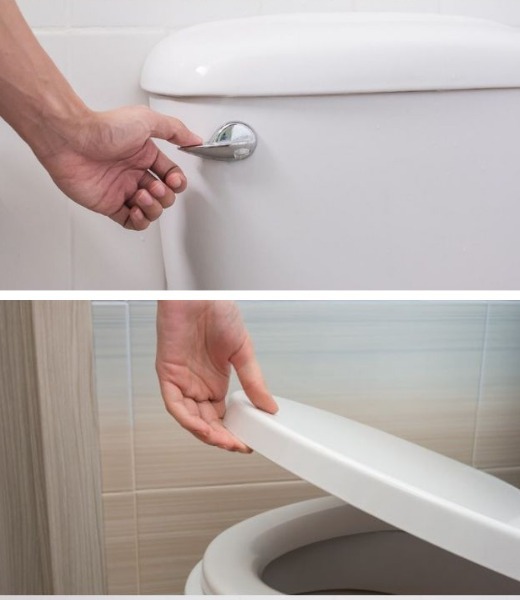ADVERTISEMENT
Flushing the toilet after urinating is a gesture that our parents have always taught us since we were little: after doing our business, we had to flush the toilet for hygiene reasons.
From that moment on, the process when we go to the toilet is practically the same everywhere: we urinate and then quickly flush the toilet.
Flushing the toilet after urinating
Of course, since it is such a simple routine, we don’t think there is an error or that we are doing something wrong, but the truth is that despite the simplicity of this procedure, we can all make mistakes.
At that point, we think: are we really doing the right thing?
From that moment on, the process when we go to the toilet is practically the same everywhere: we urinate and then quickly flush the toilet.
Flushing the toilet after urinating
Of course, since it is such a simple routine, we don’t think there is an error or that we are doing something wrong, but the truth is that despite the simplicity of this procedure, we can all make mistakes.
At this point we think: are we really doing the right thing?
What happens to germs?
We all know that when we flush the toilet, the cistern ensures that the water from the toilet drains into the bowl.
However, this simple process can cause germs to spread throughout the bathroom.
So if we don’t want our bathroom to become an amusement park of unwanted germs, we can minimize their spread by only flushing the toilet after the top lid is closed.
Save water
For those who don’t know, flushing the toilet requires between 3 and 10 liters of water, this depends a lot on the cistern we have installed in our bathroom.
Continued on next page
ADVERTISEMENT
ADVERTISEMENT
Even if we waste 3 to 10 liters of water every time we urinate (remember that we are talking about drinking water), at the end of the day we will have wasted about 80 liters of water. This calculation is individual. So imagine the effort that would be made by a family of four going to the toilet several times a day!
Such water waste not only harms us, but the entire ecosystem. For this reason, washing less frequently or at least reducing it is a good way to reduce water waste, especially when it is not necessary.
How many bacteria are in urine?
Many people believe that urine is sterile. This is wrong in itself, but the truth is that the amount of microorganisms and bacteria in urine is much lower than what we find in our own saliva.
By this we mean that although bacteria are still present, their concentration is so low that leaving the urine in the toilet for a few hours is not a problem.
Change water pressure
Have you ever been in the shower and flushed the toilet? If you have lived with several people, this has probably happened to you more than once, and we assure you that the water pressure drops and we often even take cold showers without warning.
This can also be affected if we use the dishwasher or washing machine while a person is taking a shower. To avoid changing the water pressure, it is best to wait until you have finished showering before flushing the toilet.
Disturb at night
If we have not urinated before going to bed, it is very likely that we will go to the toilet in the middle of the night. That is, if we flush the toilet late at night, the noise can make us more awake and also wake up others.
This recommendation to use the toilet less only applies when we are at home. However, for obvious hygiene reasons, using the toilet in public places is essential.
ADVERTISEMENT
ADVERTISEMENT
